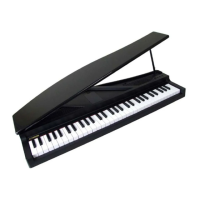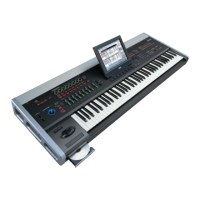29
Caution regarding USB connection
If you lose data synchronization with the M3 when starting-up the editor, please
check the following points.
• If you’re using a USB hub, try connecting the M3 directly to a USB port on the computer
itself to see whether it will work. You can also try removing all other connected USB devices
except for the M3 itself.
When you lose data synchronization, please perform the “Receive All” or “Transmit All”
function in the Editor’s “UTILITY” menu in order to synchronize the data between the editor
and the hardware.
The M3’s USB ports support USB 2.0.
• Since the M3 supports USB 2.0, we recommend that you connect it to a USB port on your
computer that supports USB 2.0, in order to allow high-speed data transfer.

